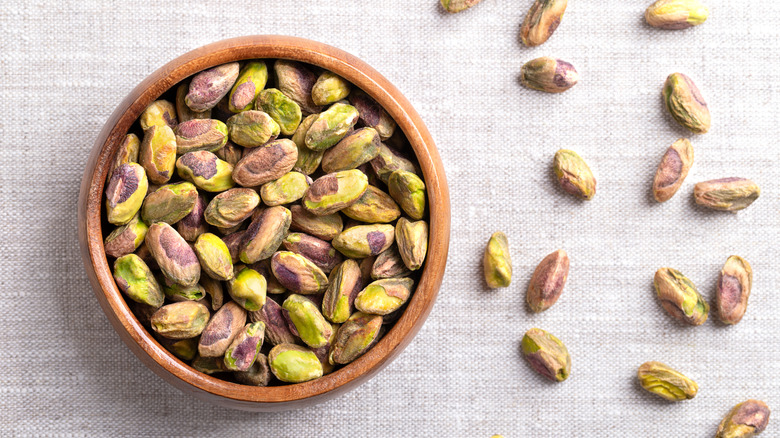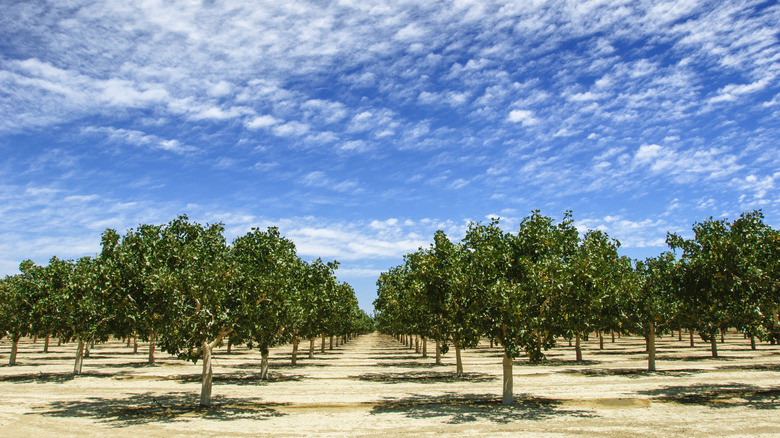The State That Produces More Pistachios Than The Rest Of The US
Pistachios are wonderful, versatile nuts. Granted, it takes some elbow grease sometimes to crack open their stiff shells, but when successful, you are treated to that gorgeous, vivid green color and a crunchy snack that is buttery and sweet. They are also incredibly popular in baked goods or ice creams and when ground into paste. Pistachios are even the green filling inside trendy Dubai chocolate. Needless to say, we go through a lot of pistachios in the United States. All of the pistachios produced in the U.S. are from California, Arizona, Texas, and New Mexico, but the most by far come from California. 99% of them grown on American soil come from the Golden State.
This wasn't always so; in fact, pistachios used to be primarily an imported good. Up until the 1970s, most pistachios came from the Middle East, specifically Iran, which even today is the largest grower of the nuts worldwide. By the 1980s, rising political tensions between the U.S. and Iran caused a boost in pistachio production in America, mostly in California. This was also when old-school pistachios were red in color and then began transitioning to their natural hue. Imported pistachios were often dyed red to hide imperfections in the shell, but advanced technology in California improved the harvesting techniques so that the shells were increasingly undamaged.
Why so many pistachios come from California
Pistachios, which shockingly have the potential to spontaneously combust, have been grown and enjoyed in the Middle East for thousands of years but are a relatively new resource in the United States. In 1929, an American botanist named William E. Whitehouse brought several pounds of pistachios from Iran to America where he planted test plots. The most successful trees grew in California's Central Valley, an area that stretches from Bakersfield in the south to Sacramento in the north. This region is also abundant in cotton, citrus trees, vegetables, grapes, and winemaking.
The climate in the Central Valley is comparable to pistachio-growing regions in Iran, which is partially why the nuts took to California so well. With hot, dry summers and mild winters, these types of climates help produce ideal growing conditions for pistachios. The industry took some time to expand, as pistachio trees take roughly a decade to fully mature, but by the 1960s, pistachio groves were becoming abundant, not only in California but in the Southwest region as well. Today, it's a $1.6 billion industry in the Western state, while Arizona and New Mexico bring in over $16 million.

